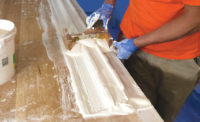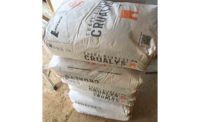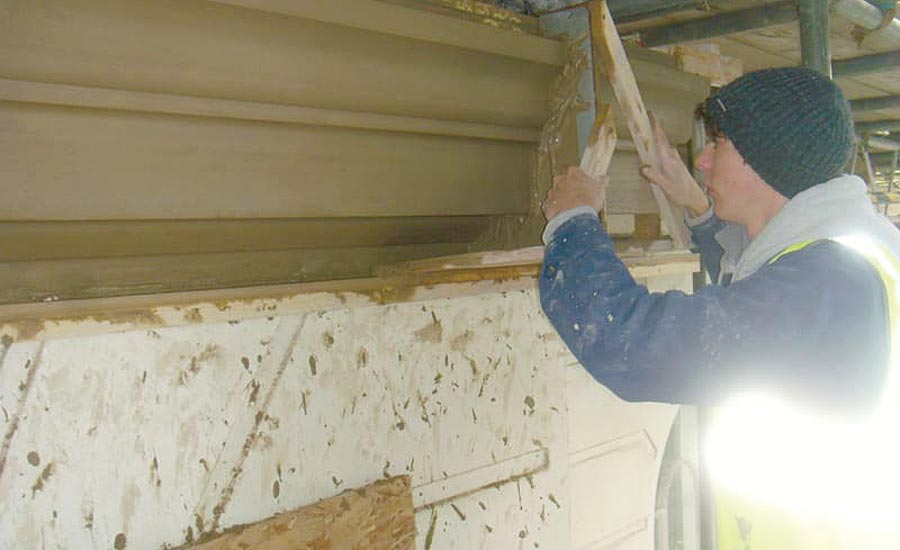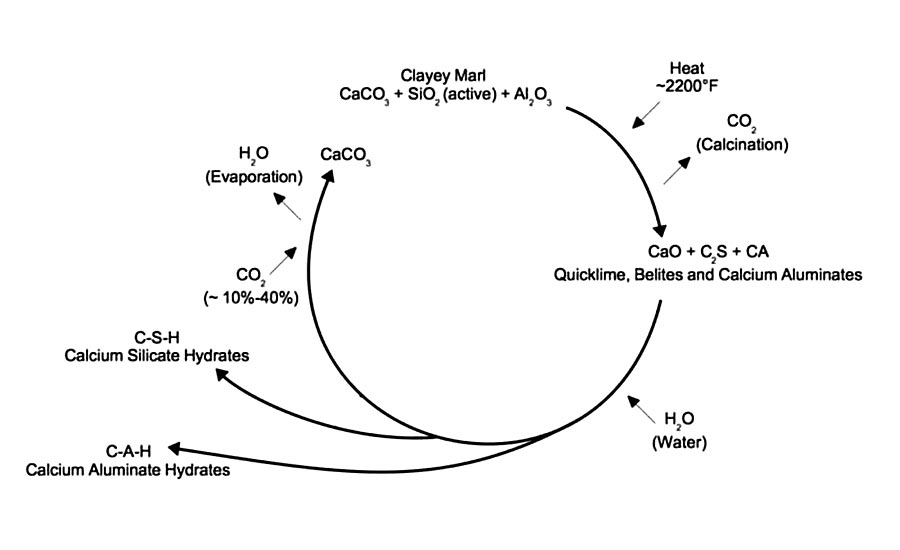How Can Cement be Natural?
Historic roots and modern uses of natural cements.

The natural designation indicates that the raw material—a type of limestone known as clayey marl—is simply mined and burnt with no further additions.





The word cement has an interesting etymology of its own, dating back to Roman times. The Latin word cæmenta meant chips, specifically the hewn stone chips used together with mortar in rubble construction. The root verb cædere means to chop or slay, precisely where we get the “-cide” suffix from, referring to something “slain.” Nevertheless, the English word cement has come to mean the binder of the plaster, stucco, mortar or poured concrete rather than the ‘chips’ or aggregates it holds together.
What makes a cement “natural?” The natural designation indicates that the raw material—a type of limestone known as clayey marl—is simply mined and burnt with no further additions. Portland and other “artificial” cements, by contrast, are produced from a man-made mixture of pure limestone, silicates and clays that resemble the chemical composition of marls or vary from them in a controlled, reproducible manner.
Natural cements first came into widespread manufacture and use in France and England but quickly spread to the United States. Many prominent national monuments and infrastructure projects utilized natural cement including the U.S. Capitol, Washington Monument, Brooklyn Bridge and Erie Canal. Natural cement likewise saw widespread use in fine residences and commercial buildings as run-in-situ moldings, cast ornament and smooth exterior stuccos often scored with joints in imitation of ashlar stone.
Chemistry & Manufacture
Similar to the previously considered natural hydraulic limes, natural cement is derived from a limestone that contains specific impurities that have infiltrated deeply into the limestone over geologic time. However, whereas the limestones that produce natural hydraulic lime and natural cement both contain amorphous silica, what distinguishes those for natural cement is an appreciable infiltration of finely constituted alumina. These special natural cement producing limestones are known as clayey marls.
Due to the fine, intimate infiltration of silicates and alumina that have occurred naturally within the limestone, the marl can be burned slowly at a relatively low temperature of under 2,200 degrees Fahrenheit. This dissipates all of the CO₂ from the limestone component of the marl. Some of the remaining “quicklime” or CaO fuses with the silica content forming belites, the calcium silicate compound responsible for the slow setting action with water of natural hydraulic limes. However, some of the quicklime also fuses with the alumina at higher temperatures forming an entire family of calcium alumina compounds. The “clinker” or burnt, fused materials, are ground into a fine powder—natural cement ready to be blended with aggregates and water.
These alumina reactions are what distinguish natural cements from hydraulic limes as the setting properties are completely transformed. Whereas pure lime must reabsorb CO₂ from the air to slowly set over months and hydraulic limes will take from hours to days for their initial set with water. The hydraulic reaction of aluminates with water characteristic of natural cements is almost immediate, a matter of minutes. Although chemically distinct, natural cements share this property of rapidity of set with gypsum plasters. Likewise, natural cements have very strong binding capacity giving them a much greater freedom in how much and what kind of aggregates are used, than is possible with other limes.
Properties & Specifications
Fortunately, natural cement continues to be produced in the United States by a couple of manufacturers. Natural cements have an early compressive strength from the initial calcium aluminate set and low permeability that makes them an ideal binder for mortars used for siliceous sandstones and other hard stones like granite. Because of a similar chemistry with natural hydraulic limes, natural cement shares a closely resembling long-term silicate curing pattern making them very compatible binders to blend with natural hydraulic limes together in the same mix, at least in certain ratios. One such common application is to use natural cement as an additive to natural hydraulic limes to speed up the set, increase compressive strength, improve erosion, salt and frost resistance, reduce shrinkage and decrease permeability. By contrast, natural hydraulic limes are often used as the additive to a natural cement when running molding in-situ, resulting in a mortar mix with increased workability and adhesion.
Because of its widespread use from the 19th through the beginning of the 20th century, there are many applications in historic restoration work. However, as there is an increasing appreciation for traditional craft, means and methods in addition to traditional architectural forms, natural cement has many possibilities for new construction. Traditional plasterers who work with gypsum will feel very comfortable using natural cement to run moldings in place, as well as, casting in ornament. As natural cements are largely self-binding, not exceedingly restrictive in the use of aggregates, rich mixes that achieve fine detail are easily achieved. In combination with natural hydraulic limes, natural cements can form the basis of durable and beautiful, integral colored exterior stuccos.
Looking for a reprint of this article?
From high-res PDFs to custom plaques, order your copy today!












